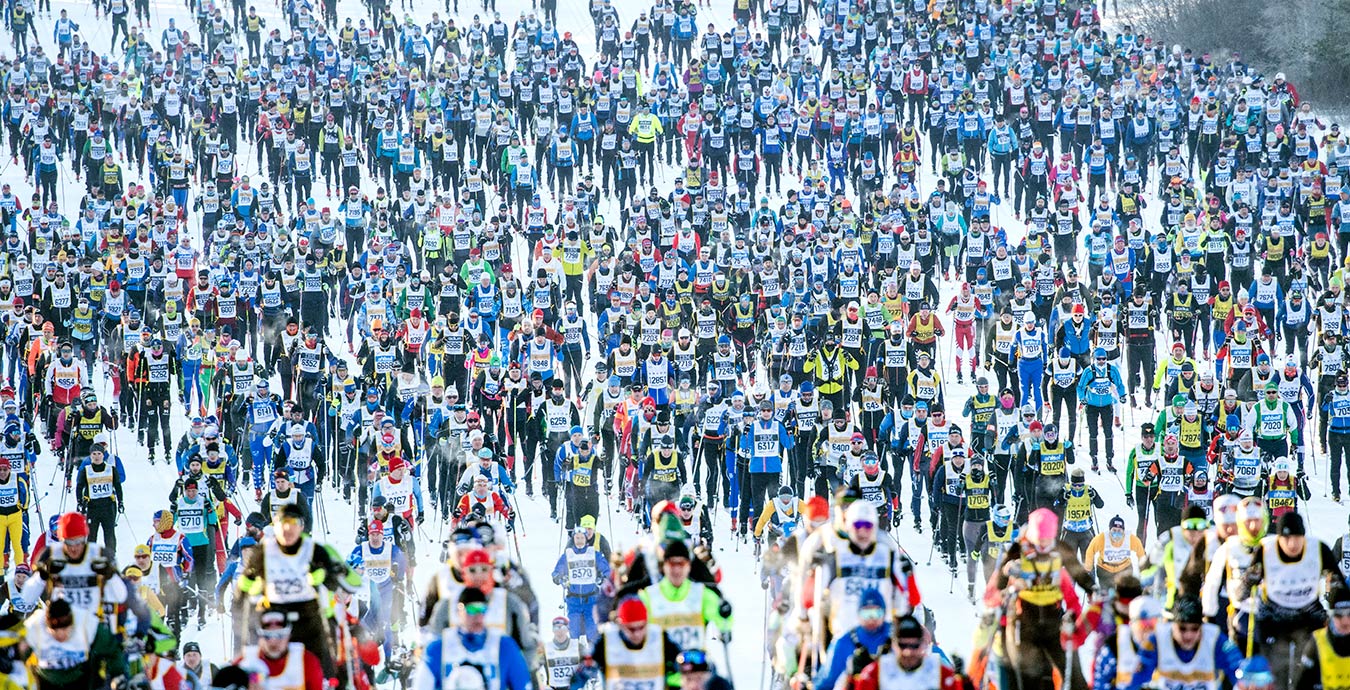Start house in Sälen and Vasastenen
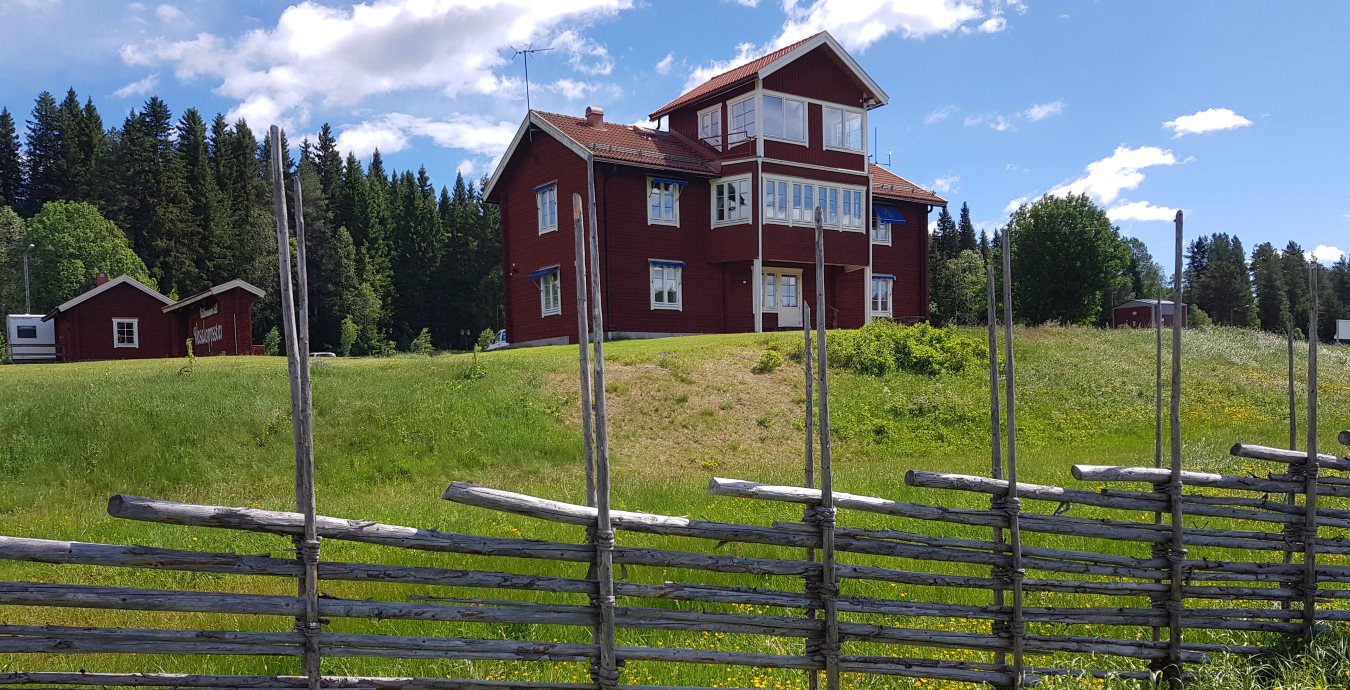
The start house in Sälen was inaugurated in 1995. There are Vasaloppet staff here all year round, and Sälens IF has its office here. There is also a small Vasaloppet exhibition for visitors.
At the start house in Sälen there is a large stone engraved with the names of all men’s class winners since 1922. The monument is about 5.5 metres tall and about 5.5 tonne heavy; a pointed obelisk made of reddish granite from a quarry in Gesunda. The monument was made in 1923 in Oxberg and unveiled by the county governor on Midsummer’s Day 1924 at the shore of the Västerdalälven river in Sälen village. In 1961, the Vasaloppet start place moved to Berga by and in 1995, the obelisk moved to its current location at Vasaloppet’s (at the time) new start house. In 2007, one side of the obelisk had filled up, and inscriptions from 2008 and on start on a new side of the stone.
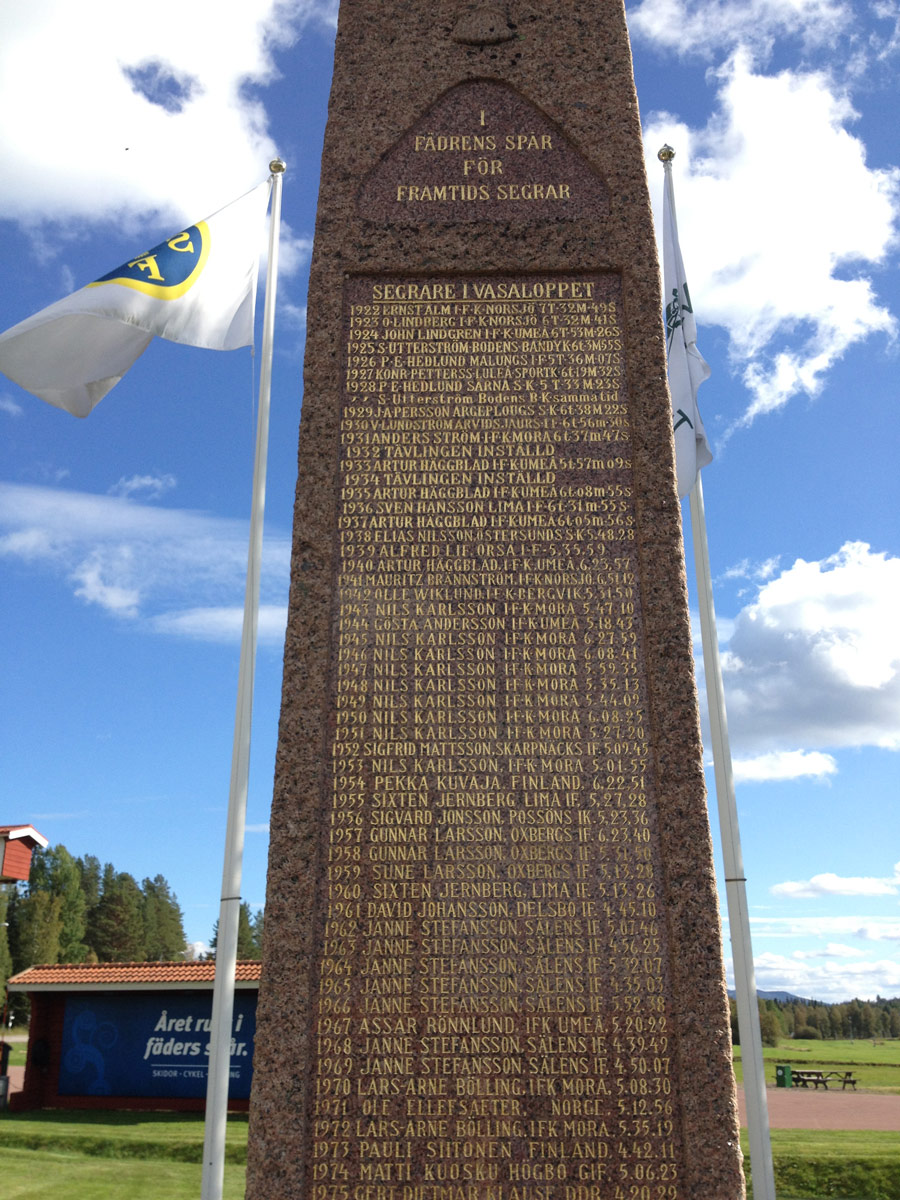
”When the time came to carve the winner’s name into the stone in Sälen, they were dead set on only putting my name up there. I told them, if you don’t get both names up there, I’ll make sure that stone disappears.” This was said by Per Erik Hedlund, officially named the Vasaloppet victor in 1928, despite the fact that him and Sven Utterström had tried to share the victory. Both names are engraved on the stone!
Vasastenen in Sälen
In Sälen there’s a memorial stone at ”Vasaholn” by the old mountain road. The stone was erected in 1903 by villagers and patriots in memory of Gustav Eriksson who, according to legend, was caught up with there by Dalarna men. The inscription translates to: ”Gustaf Eriksson Vasa 1521. If you wish to be our overlord, both old and young will follow”.
It took 10 horses to move the block of stone from the Limedsforsen railway station. People from villages all around left their homes to make that journey together. The bridge over the Västerdalälven river sagged under the weight of the stone. For the last 100 metres, the people of Sälen had to pull the stone up the slope themselves, using a 100-metre rope. The monument was inaugurated with pomp and ceremony on September 18, 1904. Parking is available at Olnispagården and you can walk up a path to the memorial stone.
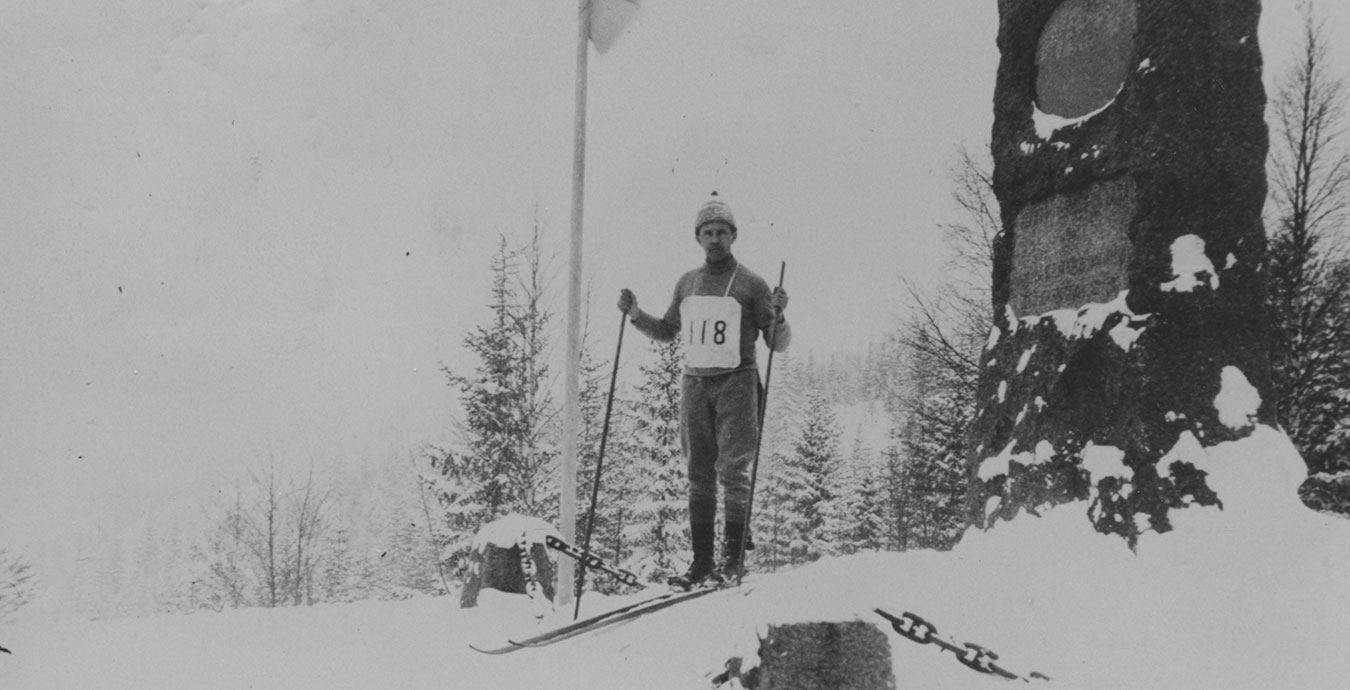
The finish line – ” In forefathers’ tracks for future victories”
Artist Anders Zorn’s statue of Gustav Vasa was inaugurated in Mora in 1903. In fact, Anders Zorn sponsored ski competitions in Mora long before Vasaloppet came to be in 1922. When the first Vasaloppet ran, they chose to place the finish right there by the statue.
A more permanent finish line was found for Vasaloppet and all other races during Vasaloppet’s Winter Week and Summer Week, centrally located at Vasaloppet’s House. The originator of the well-known motto is Gustaf Ankarcrona, an artist and preservationist from Leksand. The motto was added as early as the second race.
Important years for the finish line portal
- 1922: The text ”MÅL” (”Finish”) on a white-painted background in a wooden frame, suspended between two flagpoles. No other decoration.
- 1923: The motto “I fädrens spår för framtids segrar” (”In the forefathers’ tracks for future victories”) was created by artist Gustaf Ankarcrona, Leksand. Painted on fabric for the 1923 Vasaloppet by artist Anders Otter, Morkarlby, and the flagpoles were framed with red wooden pillars. Pine garlands all around.
- 1948: The spelling of the motto was updated to the modern “I fäders spår för framtids segrar”. Painted by artist and conservator Evald Håkansson, Sollerön.
- 1979: New paint with green pine garlands on the cloth, surrounding the text, by Evald Håkansson.
- 1986: In February, the finish line portal was made permanent, to stand all year round. The bathtub factory VVS Gustavsberg constructed it using enamel on steel. It turned into a big piece of enamel art! It could be considered two works of art, each eight eight metres wide and 1.5 metres tall, given that the portal looks the same from both directions. Each side consists of ten 80 x 150 centimetre plates. This was ”bathtub plate”, primed and top enamelled at 820 degrees. The text was screen printed and burned into place. Antti Walin from the Gustavsberg factory hand-painted the pine garland and the text of the motto. Artist and enamel painter Hadar Tilja in Stockholm had developed a new method of painting enamel: With this method, he hand-painted the emblems with garlands, sheaves and crossed branches – using 19 different colours.
The portal with the famous motto has become one of Mora’s best-known brands and has travelled around the world in pictures and reports. In connection with the Swedish Sports Confederation’s 100-year anniversary in 2003, ”100 sports environments” in the country were honoured. The Vasaloppet finish line was one of these.
The new finish
Due to the new infrastructure project “Genomfart Mora”, the final stretch was shortened by about 100 metres in 2021. A new, temporary finish line portal, identical to the permanent one, is now built up ahead of each event on level with the church belfry, right by the Vasagatan roundabout. The new final stretch is about 340 metres, counting from the turn at the Zorn museum to the new finish line.
The total length of any race isn’t significantly changed by this since course layouts are adjusted on an almost annual basis depending on ground conditions in the Vasaloppet Arena and other factors.
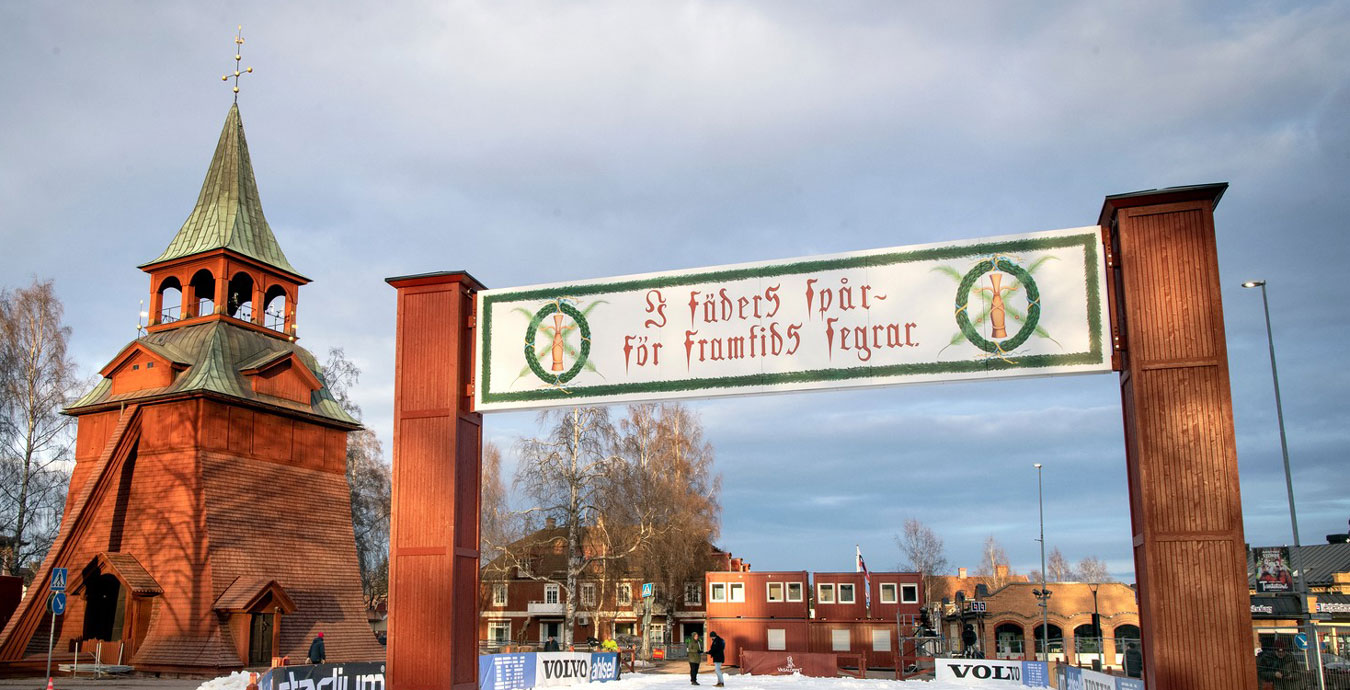
The original finish line portal, which became permanent in 1986, will stay in its current place and become part of a medal square.
Vasaloppet’s House and Mora-Nisse’s Square
Vasaloppet’s House in Mora was inaugurated in 1994 and it contains the IFK Mora office on the ground floor and Vasaloppet’s office on the upper floor. In front of Vasaloppet’s House you’ll find Mora-Nisse’s Square (inaugurated in 2007) with stones in red Älvdalen quartzite naming all the winners in Tjejvasan and Vasaloppet’s women’s class.
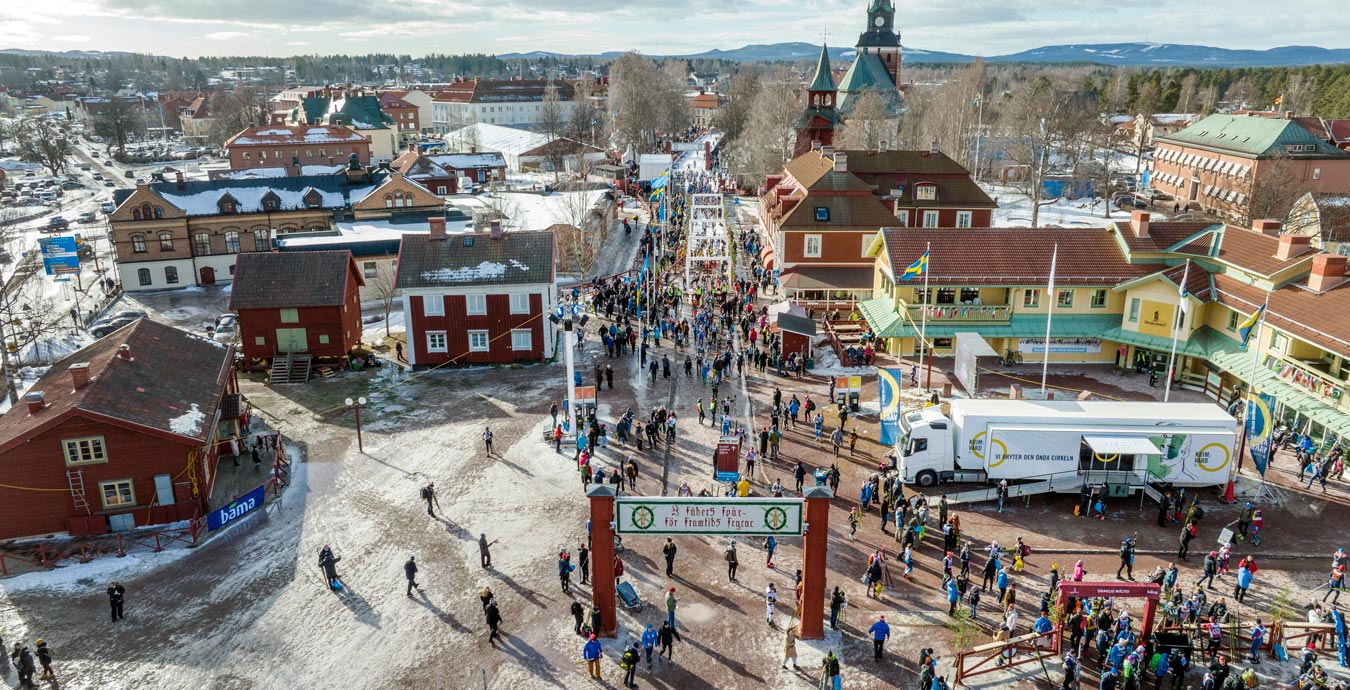
Gustav Vasa statue
Next to Vasaloppet’s permanent finish line is Anders Zorn’s statue of Gustav Vasa, erected on the hill where Gustav Vasa stood and spoke to the people in 1520. The statue reads, in the Moramål dialect: ”Jän Gustaf Eriksson Täled a morkarrum 1520 reited dalfolk mörkja 1903. Gärdi Zornim.” (”Here, where Gustaf Eriksson spoke to the Mora men in 1520, the people of Dalarna erected this mark in 1903. Zorn’s work.”) The stone is a granite block from Krångåsen’s summer farm. More than 10,000 people gathered for the dedication of the statue. A company and Prince Gustaf (later Gustaf V) unveiled the statue.
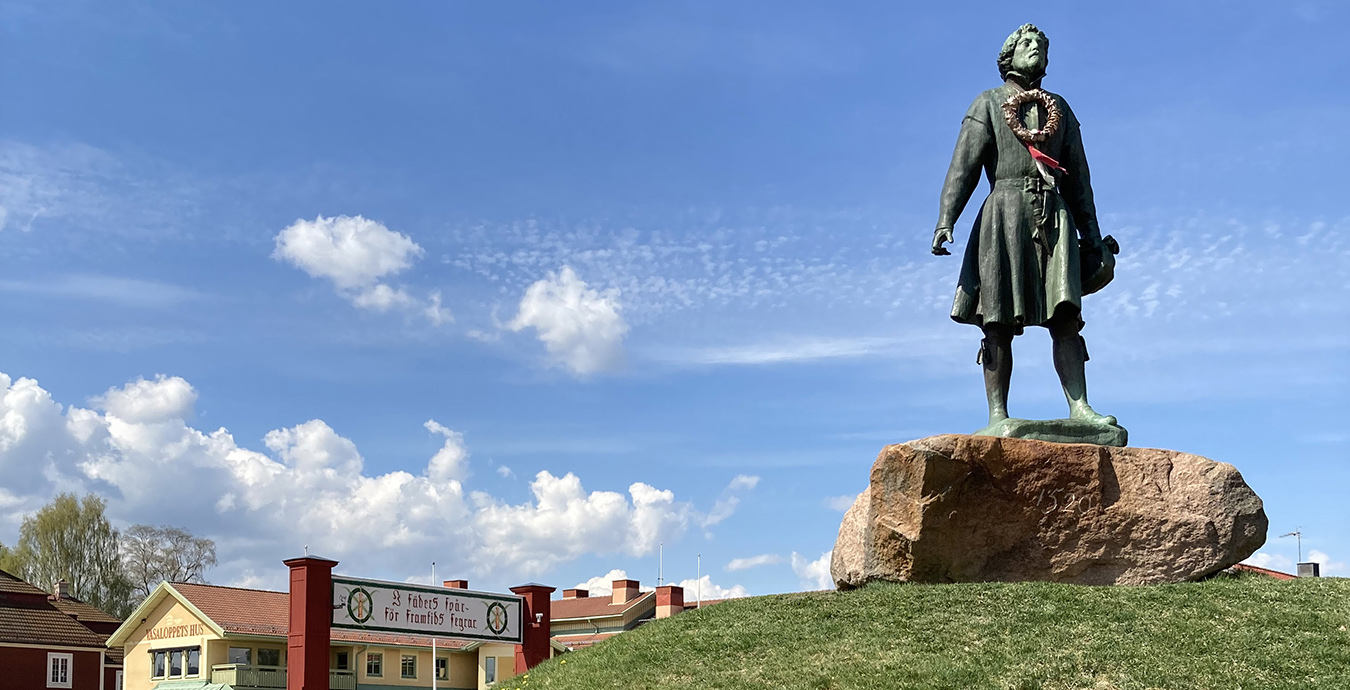
The Vasalöparen statue
On June 23, 1974 the ”Vasalöparen” statue was unveiled in the municipal house park in Mora. The statue, which was a gift from Mora municipality in honour of the 50th Vasaloppet in 1973, was made by artist Per Nilsson-Öst from Järvsö.
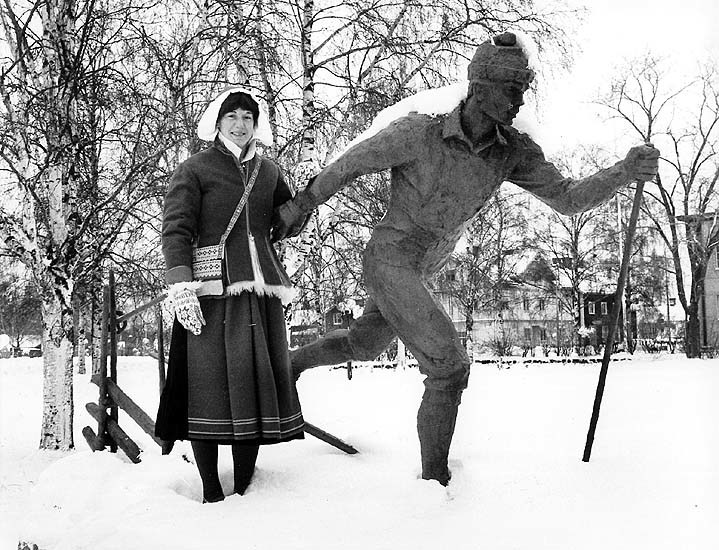
The page was updated 2024-04-24
